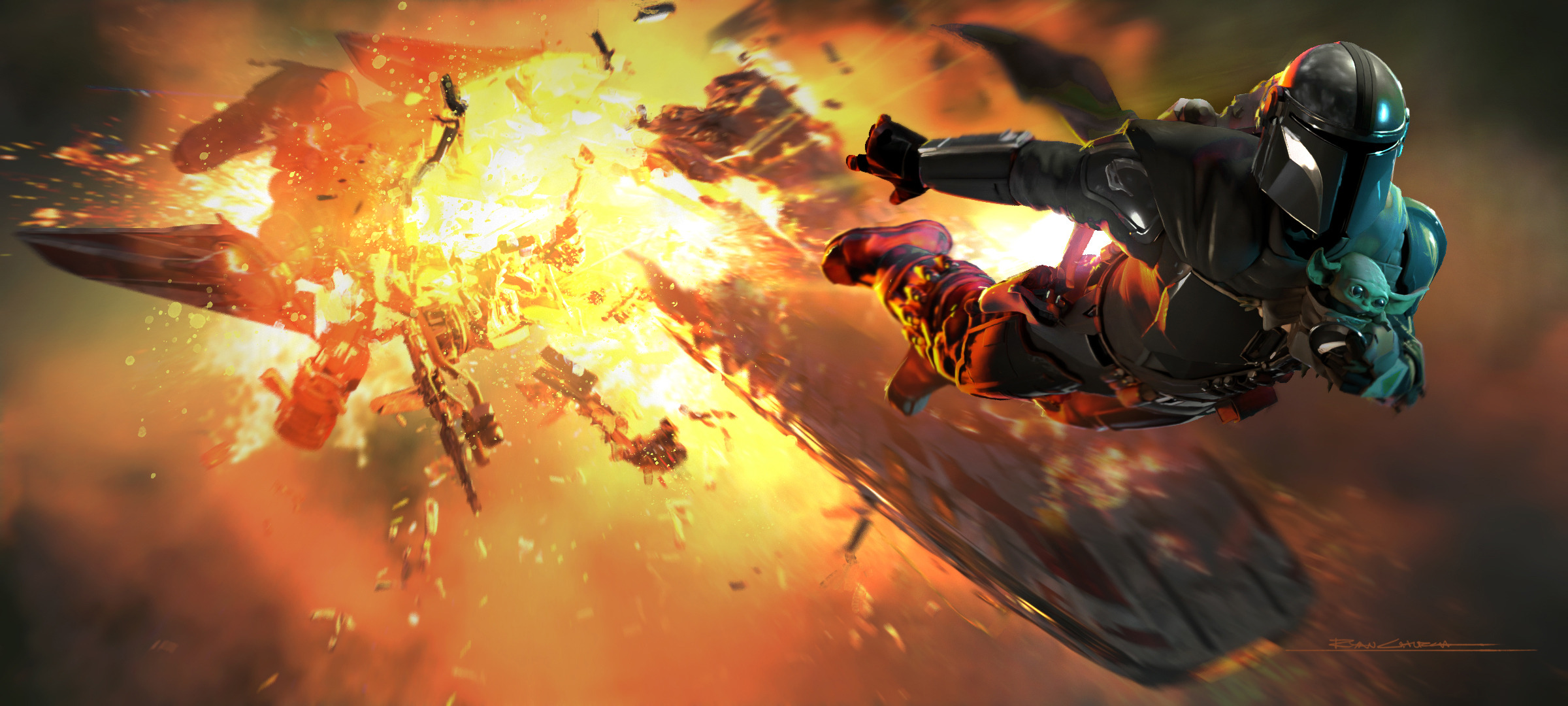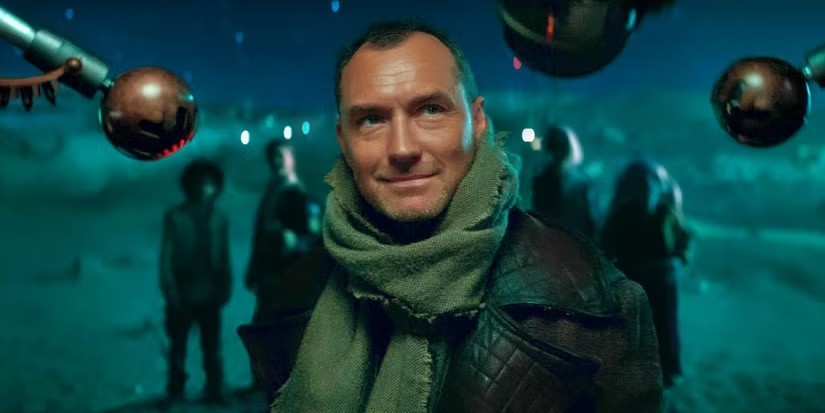Before I delve into the actual review of the film, it’s worth knowing right off the bat that this review is coming from someone who loathed that first film. I had gone into that first movie hoping for a dumb fun thrill ride that paid homage to anime, a medium that I thoroughly adore. Instead, I got a dark, brooding, overly-serious, bore-fest that seemed to take all the shallow, dumb parts of anime I hate and bring them front-and-center.
As such, keep in mind that my own opinion of this sequel may very well contradict your own if you enjoyed that first movie — as I know the Guillermo del Toro flick has its fans. But anyway, onto the review!
Given my dislike of that first film, Pacific Rim Uprising was a movie that I was very interested to see. When the trailer was first released, it seemed to promise all the dumb fun that I wanted out of that first movie, and more. It brought vibrant color, more Kaiju on Jaeger fight scenes, and most importantly, it let the robots fight in the light and above water, which was a huge plus. Would it be able to succeed on the levels that I thought the first movie failed at?
In my opinion, the answer is mostly a yes.
Pacific Rim Uprising takes place roughly ten years after that first film. The portal that led in the Kaijus have been closed the entire time, and civilization has mostly rebuilt, and while there is some paranoia about the portals re-opening, most have moved on. The film’s protagonist is Jake Pentecost, played by the endlessly charismatic John Boyega. As the name indicates, he is the son of Idris Elba’s character for the first movie.
When the film begins, he lives in the abandoned areas of the world, where Kaiju carcasses still pollute the land. He’s not like his father at all. At least, that’s what he likes to tell himself. However, when a run-in with a young mechanic, Amara Namani (played by Cailee Spaeny) gets him in trouble with the law, he is forced to go back into the military to help train the next generation of Jaeger pilots. But with the portals closed up and not a Kaiju in sight, what danger are they preparing for…?
Those who have watched the first Pacific Rim will notice that the tone is drastically different. It’s bright. It’s polished. And It’s definitely more commercial and calculated. Whether or not you’ll be able to tolerate that approach depends on your personal taste.
Right off the bat, we have more of rogue-like hero with a likable personality. He’s not looking to be a hero. He’s not looking for responsibility, but it comes to him nonetheless. This, I think was mostly a positive, as it gave me a character for who, as an audience member, I could connect with on some base level. The same goes with Amara, who is funny, capable, and interesting to follow. Immediately, with those two at the forefront, it managed to be a more engaging watch from the get-go. Even when the writing fell flat, these two leads managed to deliver it all in a way that I could let slide.
Because of my attachment to the characters (as well as their avoiding of hammering home story points that I already piece together myself — I’m looking at you, original Pacific Rim flashback), everything that followed was instantly more entertaining. It wasn’t exactly Shakespeare — it has more clichés built into the story than you can shake a stick at — but I had a good time watching almost the entire time.
The world that director Steven S. DeKnight created here is much brighter, and a lot more interesting, with the politics of human vs. remote piloting being thrust to the forefront. Unlike the first movie, I found myself interested in the day-to-day of this world, and wanted more hours to see more of different layers showed to us. And here are where the flaws start to bleed in.
This movie is just a bit too ambitious for its own good. It does a great job of setting the stage and characters, but doesn’t do a great job of paying it off. John Boyega’s character is painted as a rogue-like outcast — one who burnt bridges along the way. That’s a great setup, and while it made me like the character, they never pay it off in a believable way. It almost felt like someone came in and added the first 15-20 minutes simply because they needed to make the leads more likable. I’ll be the first to admit that it works on a visceral level for me, but from a storytelling perspective, it’s weak. Very weak. He may say he’s a rogue, but when the problems arise, he has no issue rising to the occasion, and it all happens too quickly. There just doesn’t seem to have been enough minutes to pay it off well.
The world is also a victim here. As I stated above, I wanted to see more. However, because this was a movie, they had to rush things through the necessary plot points in order to make it to the end. Like the character issue above, it set up things pretty well, but ultimately gave us too little time to explore it all.
Now let’s talk about the action scenes. They’re…okay. I’m not much of an action guy. To me, in order to make action scenes engaging, they need to be character-focused, utilizing their attitudes and personalities and incorporating them into the choreography. Sadly, that doesn’t happen here. What we end up with are over-long, generic-looking fight scenes. It often feels a lot more like a video game than a movie, and while I didn’t care for the first movie’s fight scenes, there was a heaviness and impact to the scenes there that this one doesn’t have (Perhaps we have the daytime fights and increased scope to blame for that).
In fact, I’d say that feeling kind of extends into the overall filmmaking. Pacific Rim Uprising is serviceable filmmaking, but not much more. It gets the job done, but it lacks any real personality or voice. Steven S. DeKnight, who is mostly known for his TV work, doesn’t really have a chance to shine here, as it seems all too clear that this movie was made to commercialize the concept of the original film. Guillermo del Toro fans will really lament the fact that his unique vision is definitely lacking here. Even as someone who hated the first one, I can appreciate what del Toro brought to the table in terms of visual stylings.

So should you see it or not? As mentioned at the top, I very much enjoyed this movie as the popcorn flick it tried to be. I may have some real problems with the story, the direction, and visual effects, but I still had a great time in the theaters, which is something I couldn’t say for the first movie. But I also know I’m in the minority here — at least in terms of hardcore fandom. I feel like audiences who enjoyed that first movie will feel betrayed by the change in tone and style, and will have wished that del Toro had a second shot at it. So you may want to use that as a barometer as for whether or not it’s worth your time.
At the end of the day, I expect this to be a movie that more mainstream audiences could enjoy, but perhaps at the expense of those like the original. I think this film will likely be a polarizing experience for many, but as far as my opinion goes, I found this one to be a step in the right direction for a series that wants to continue.
GRADE: C+
Don’t forget to share this page on your Facebook wall or with your Twitter followers! Just hit the buttons at the top of this page.

 FOR FANBOYS, BY FANBOYS
Have you checked out LRM Online’s official podcasts and videos on The Genreverse Podcast Network? Available on YouTube and all your favorite podcast apps, This multimedia empire includes The Daily CoG, Breaking Geek Radio: The Podcast, GeekScholars Movie News, Anime-Versal Review Podcast, and our Star Wars dedicated podcast The Cantina. Check it out by listening on all your favorite podcast apps, or watching on YouTube!
Subscribe on: Apple Podcasts | Spotify | SoundCloud | Stitcher | Google Play
FOR FANBOYS, BY FANBOYS
Have you checked out LRM Online’s official podcasts and videos on The Genreverse Podcast Network? Available on YouTube and all your favorite podcast apps, This multimedia empire includes The Daily CoG, Breaking Geek Radio: The Podcast, GeekScholars Movie News, Anime-Versal Review Podcast, and our Star Wars dedicated podcast The Cantina. Check it out by listening on all your favorite podcast apps, or watching on YouTube!
Subscribe on: Apple Podcasts | Spotify | SoundCloud | Stitcher | Google Play





